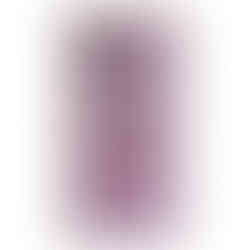Old or New Asafo Flags?
- Asafo Flags

- Jan 8
- 4 min read
Asafo flags, also known as "frankaa," are a unique and vibrant cultural expression of the Fante people of Ghana. These flags, traditionally created by military companies known as Asafo, serve as symbols of identity, strength, and history.
The designs on these flags are often bold, featuring scenes of battles, animals, and proverbial symbols that convey messages of power, protection, and community values.
Not only are the authentic vintage flags beautiful works of art, but they also serve as historical documents providing insights into the social, political, and spiritual life of the Fante people.
However, as interest in African art has grown, so too has the market for Asafo flags, leading to a surge in old and “copy" flags that both intrigue collectors and historians alike.
Traditionally, these flags were made to order from professional flag makers along the coast by Asafo members typically on behalf of the Supi (superior chief) to celebrate their rank or to depict a historical event within the community.
Flagmakers often used locally sourced materials such as cotton, and they were hand-stitched with appliqué techniques (some earlier flags were also hand-painted) over time, these flags evolved to include European influences, especially with the introduction of trade cloth and the use of more elaborate and colorful designs.
As these flags gained international attention, particularly in the 20th century, their value as cultural artifacts and collectibles increased. This rise in demand led to the emergence of “copies” with collectors ordering bulk flags that were either newly made to look old or completely fabricated to deceive buyers.
"Fake" copy flags can take several forms; some are blatant forgeries, made to look like historical flags but with inaccurate or anachronistic designs. Others are reproductions that, while not intended to deceive, can still be mistaken for authentic, older flags by those unfamiliar with the nuances of Asafo art. For example, a flag purchased from the local Art market with the British Union Jack canton does not mean the flag was made before Ghana's Independence in 1957.
These reproductions are often created using modern materials and techniques, lacking the handmade quality and cultural significance of genuine older flags.
One of the key ways to identify a fake copy flag is by examining the materials and construction techniques. Authentic flags typically show signs of wear and aging, such as fading or fraying, and are made with hand-stitched appliqué which are very hard to fake. In contrast, copy flags may use very low-quality fabrics, machine stitching, and artificial aging techniques to mimic the appearance of an old flag.
Old flags, especially those dating back to the 19th and early 20th centuries, are highly prized and are now very rare to find the majority are now in private museum collections like the British Museum.
The market for old flags is fraught with challenges and the high demand has led to a surge in prices, which in turn has encouraged the production of poorly made copies. Additionally, the lack of comprehensive documentation and research makes it difficult for collectors to authenticate and accurately date these artifacts.
We have also seen a surge in the number of new copy flags listed as authentic vintage on websites such as Etsy and Ebay.
To protect the legacy of it is essential to promote awareness and education about these unique cultural artifacts. Collectors and institutions should seek out experts in the field who can provide guidance on the authenticity of flags. Additionally, supporting research and documentation efforts can help create a more robust body of knowledge making it easier to identify and preserve genuine examples.
Moreover, the flag makers who continue to produce flags today should be recognized and supported. By purchasing new, authentic flags directly from these communities, collectors can help sustain this rich tradition while also ensuring that their collection includes pieces with genuine cultural significance.
Here are some comparisons:
From our collection is the flag on the left, made in the 1940s by the artist Nana McCarthy. The unique stitching and materials used in its creation set it apart from the newer version on the right, which is listed as "vintage" and claimed to be from the mid-20th century.
The newer copy flags are typically made within the last 15 years.
Another flag from our collection on the left was made in the late 19th century using damask fabric imported from Prato, Italy during the same period. Additionally, this flag may also contain winceyette fabric, potentially imported from cotton mill factories in Manchester or Liverpool.
Collectors with a keen eye can easily distinguish the "copy" on the right from the original based on the quality of the fabric, craftsmanship, and finishing details. The newer flags, depending on the workshop, exhibit significant differences from the authentic ones.
We are dedicated to preserving the rich tradition of flag-making and work closely with the remaining artists and their families ensuring proceeds directly support and sustain their artistry you can visit our online shop page here.
In Ghana, you can also support the makers by visiting the Osabarimba Asafo Gallery in Cape Coast at the Emintsimandze Palace.
The gallery also works with the makers to highlight the rich history of the Asafo companies and the craftsmanship of Fante art, offering education for future artists to preserve this heritage.



















Comments